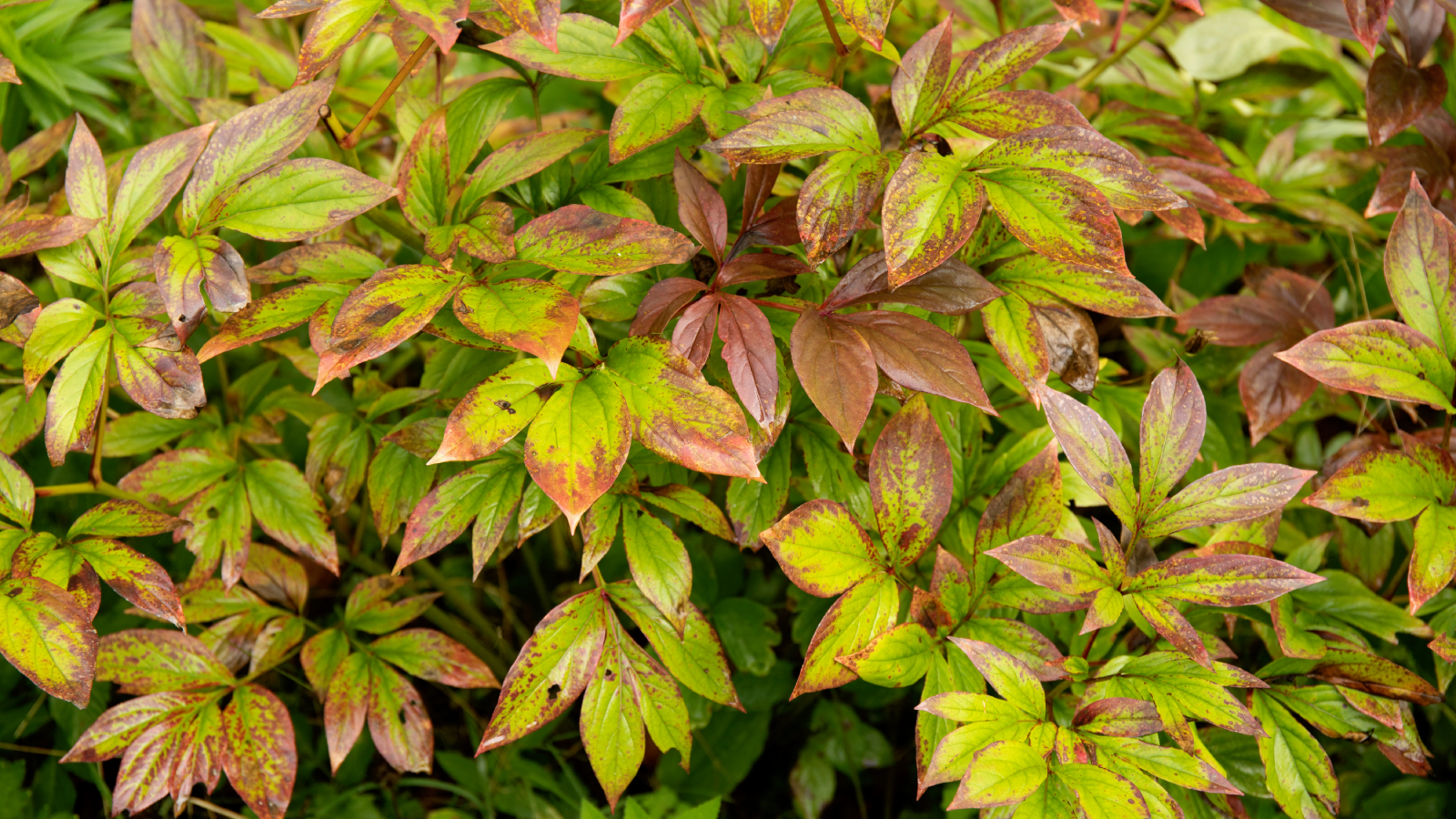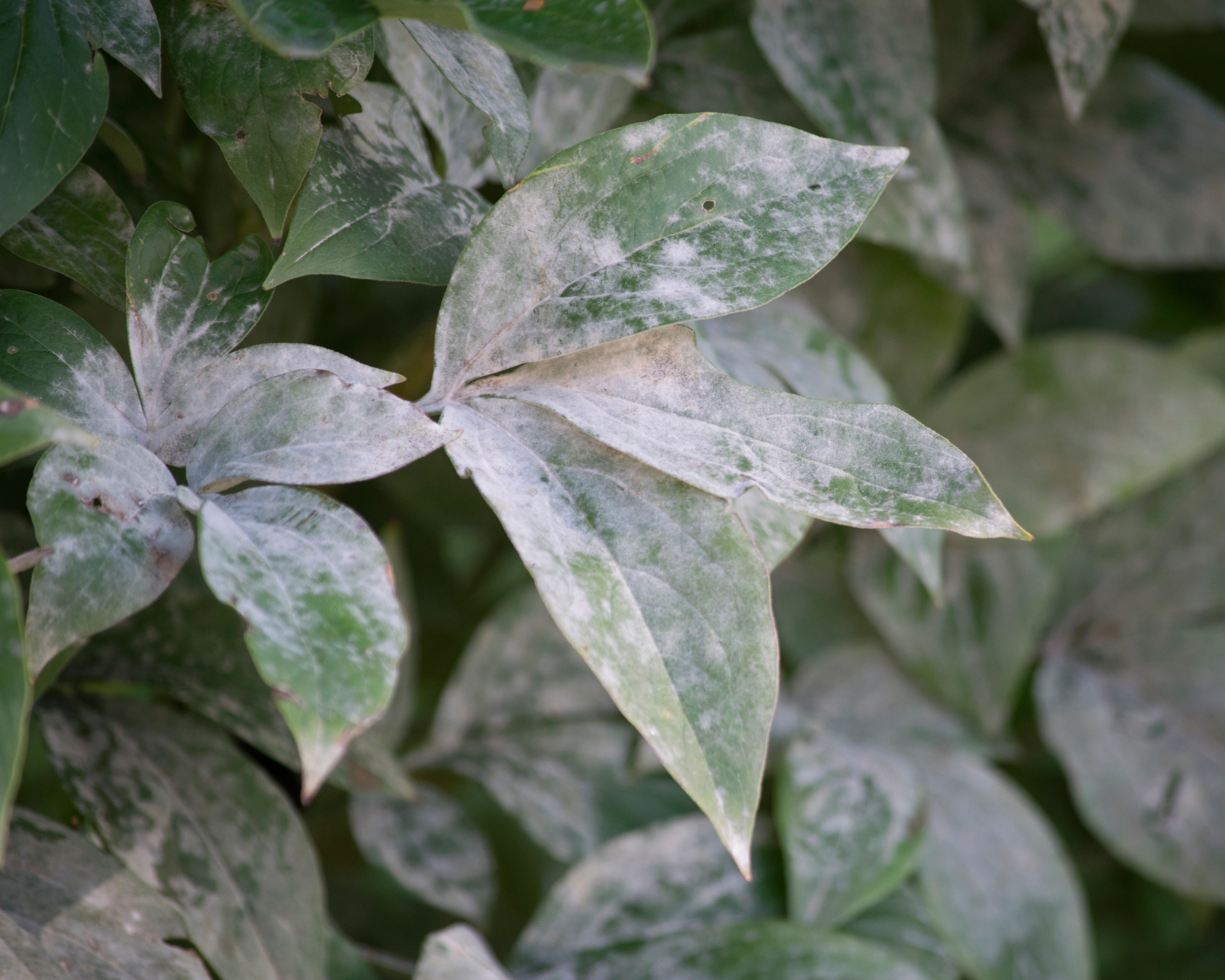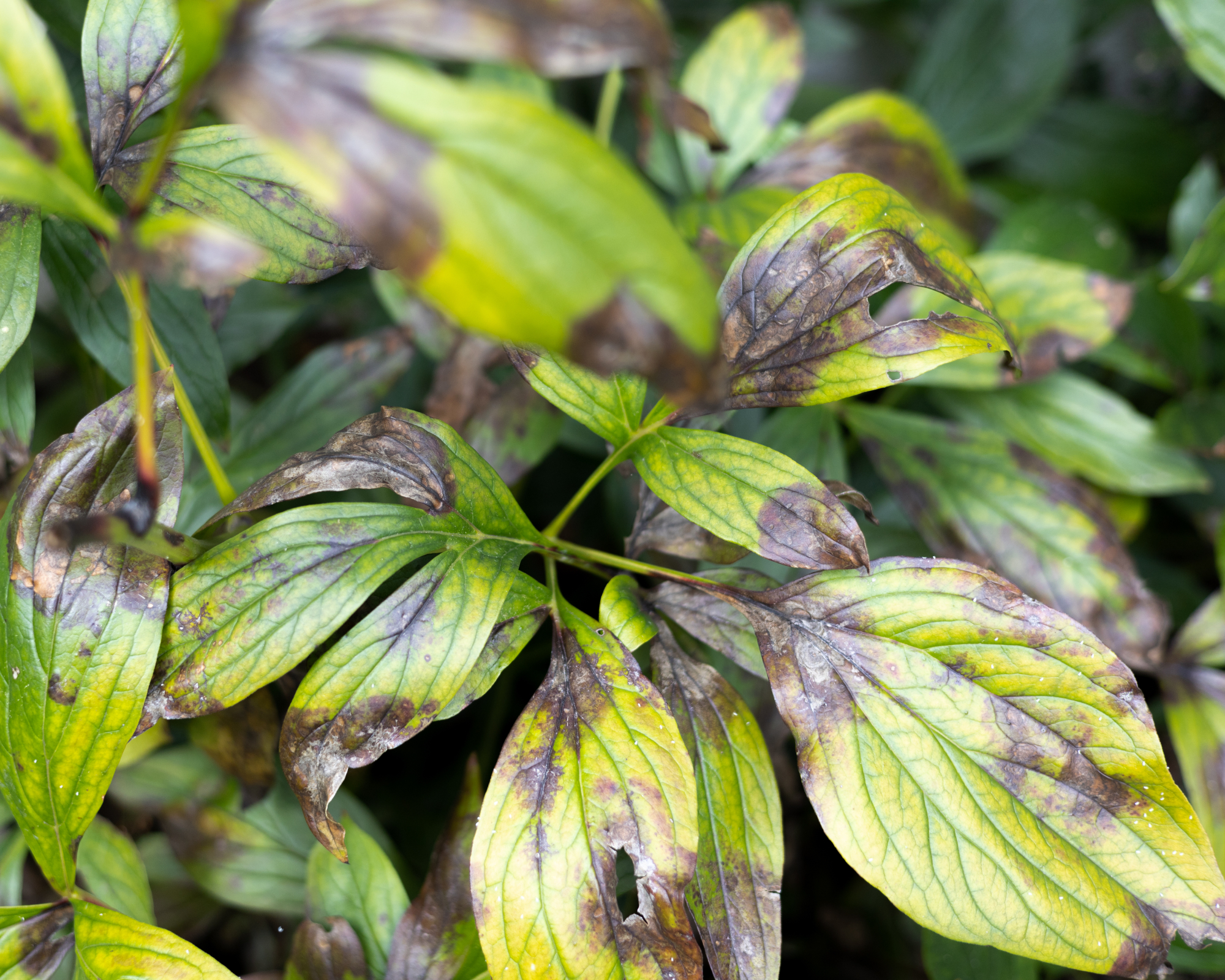6 Common Peony Diseases: How To Identify, Prevent & Treat Them
Peony diseases can ruin blooms and even be fatal to these typically long-lived plants. That’s why it’s important to learn how to identify, prevent, and treat problems before they cause lasting damage.


Tonya Barnett
Peony diseases are sure to distress any gardener. These beloved perennials are essential ornamental plants. When you grow peonies the right way, they produce a show-stopping display that lasts a short time in late spring. Their gorgeous, ephemeral display makes them the crown jewel of many a garden. But it’s also why peony diseases are so devastating.
Many diseases left unchecked can ruin blooms, often for several years, leaving a major gap in the spring garden. But learning how to identify, prevent, and treat common peony diseases, will ensure you have happy, healthy plants full of blooms for many years to come.
Common Peony Diseases
Like other ornamental plant issues, peony problems emerge when growing conditions are less than ideal. This includes adequate plant spacing, sunlight, as well as drainage.
Though peonies are generally quite robust, problems may vary from one season to the next. Recognizing the signs of common peony plant diseases, like spots on peony leaves or peonies not blooming, will help you decide how to treat them. Let’s take a look at the most common peony diseases home gardeners face.
1. Botrytis Blight
Botrytis blight is the most common peony disease. It’s prevalent during rainy spring seasons. Dark brown spots appear on young peony growth in early spring. Shoots can then suddenly wilt and break, ruining buds and diminishing blooms for the season. Next, gray mold spores appear just above ground level and spread to other plants in the garden. Botrytis blight can devastate an entire peony plant and even affect blooms after picking.
To control botrytis blight in peonies, cut back diseased foliage and destroy. Do not add the cuttings to your compost pile. The fungal spores that cause botrytis blight can overwinter in soil, mulch, and compost. Throw affected plant cuttings into the trash to prevent spreading the disease.
In severe cases, you can apply fungicide to peony plants in early spring as you see the disease develop. Spray young shoots with Bordeaux mix, or a copper sulfate fungicide. Be aware, though, that this type of fungicide can cause foliar damage to plants. For the best defense, plant a blight-resistant variety like the classic ‘Sarah Bernhardt’ peony.
Sign up for the Gardening Know How newsletter today and receive a free copy of our e-book "How to Grow Delicious Tomatoes".
2. Powdery Mildew

Powdery mildew is another common peony plant disease that’s easy to identify. Plants affected by powdery mildew exhibit a cloudy, whitish appearance on their leaves. It’s a fungal disease that thrives in humid weather and damp environments. Avoid overhead watering to prevent this problem.
Though not fatal, powdery mildew on peonies can spread and deform flowers. To treat this common peony disease, spray plants with horticultural oil or neem oil. You can also create your own DIY fungicide by mixing one tablespoon (15 mL) each of baking soda, horticultural oil (or canola oil), and liquid dish soap into a gallon (3.8 L) of water.
3. Phytophthora Blight
Phytophthora blight is often confused with botrytis blight. It exhibits many of the same symptoms, including dark leathery stems that wilt and die as well as buds that turn brown and never bloom.
One difference is that the dark spots are even darker than the spots caused by botrytis blight, approaching black in color. Also, the dark spots stretch further down the stems, often several inches below buds and even reaching out onto the adjacent leaves.
Phytophthora blight also occurs in wet weather. But it is more aggressive than botrytis blight and can affect the crown, causing it to develop a wet rot that can kill the entire plant.
Though more serious than botrytis blight, phytophthora blight is less common. If you notice signs of this peony disease, spray your plant with a Bordeaux mixture after shoots emerge in spring. During especially wet seasons, spray again during bud formation to prevent issues. Make sure to cut back and throw diseased foliage in the trash to prevent spread.
4. Peony Wilt
Peony wilt is caused by Verticillium, a fungus known to many tomato growers. It causes peony plants to suddenly wilt and die back during bloom time. As the plant wilts, the lower leaves also yellow and fall off. Verticillium wilt stunts growth and ultimately kills the plant. There is no treatment for this disease.
Dig up affected plants and dispose of them in the trash. If you plan to replace your peony, change the soil in the area to avoid transmitting the disease to the new plant.
5. Root Rot or Crown Rot
Root rot and crown rot are more serious, yet less common problems with peonies. In severe cases they can cause the loss of entire bushes, though prevention is easy so it shouldn’t have to come to this. Common signs of root rot or crown rot are leathery cankers that are dark brown or black in color. Plants may also be stunted or appear yellowish. Stems may break off where cankers form.
Common causes of root rot and crown rot are contact with manure, planting too deep under soil or mulch, or poor drainage. Though these are also environmental conditions that cause fungal disease so it is unclear whether poor growing conditions are the main cause or fungus is the primary issue.
Either way, there are few treatment options other than removal of infected plants. In fall, you can dig up plants and either destroy them and start fresh with new peonies in a better location or you can try moving plants. Wash off the roots and cut away any decayed areas, then divide if desired and replant. Make sure not to plant too deep. Cover the crown with only 2 inches (5 cm) of soil. Peony do not like to be moved, so plants will need several years to establish before they resume blooming.
6. Peony Leaf Blotch or Measles

Peony leaf blotch, also known as peony measles, is a common peony problem that develops in summer. The first signs of the disease are maroon colored spots that appear on leaves and stems. They grow larger and turn purple-brown as the disease progresses. Like many of the other diseases, this peony leaf blotch occurs during wet weather, especially if it’s warm.
Avoid overhead irrigation and make sure there is good air circulation around plants. At the end of the season clean up diseased debris and do not compost, as peony measles can overwinter. You can also use a fungicide to protect plants, though this disease is not fatal and does not usually require much intervention other than proper care.
Peony Disease Treatment
Though learning how to treat peony diseases may feel intimidating, most solutions are simple depending upon the diagnosis. Many forms of blight can be controlled from one season to the next through clean up and disposal of infected plant parts. Foliar fungicides may also be helpful in the control of these diseases. As always, make certain to read and carefully follow the manufacturer’s use and safety label.
Many peony viruses, as well as wilt and rot, require gardeners to remove the entire peony plant. Though disappointing, diseased plants often do not produce flowers and may appear unsightly in the landscape. In some cases, removing them will also prevent disease spread to other peonies.
Prevention of peony disease problems remains to be one of the best solutions in maintaining healthy peonies. Good air circulation, proper drainage, and garden sanitation are all essential to successfully growing peonies.

Laura Walters is a Content Editor who joined Gardening Know How in 2021. With a BFA in Electronic Media from the University of Cincinnati, a certificate in Writing for Television from UCLA, and a background in documentary filmmaking and local news, Laura loves providing gardeners with all the know how they need to succeed, in an easy and entertaining format. Laura lives in Southwest Ohio, where she's been gardening for ten years, and she spends her summers on a lake in Northern Michigan. It’s hard to leave her perennial garden at home, but she has a rustic (aka overcrowded) vegetable patch on a piece of land up north. She never thought when she was growing vegetables in her college dorm room, that one day she would get paid to read and write about her favorite hobby.
- Tonya BarnettWriter